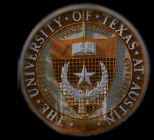


|
The DMCL User's GuideIntended to ease your entry into DMCL, this guide should give you clues on setting up your path, running simulations, etc. Contact Jasleen (jks@cs) with suggestions for improvement.The DMCL Administration...... can be contacted at admin@dmcl.csres.utexas.eduDMCL Machines:The command 'dmclhosts' gives you a list of machines in DMCL, along with their IP addresses, processors and operating systems.Click here for: Specs of DMCL Hardware Setting up your path:
Disk UsageAll DMCL hosts have a local filesystem mounted on /export/suburbia, available for disk intensive activities. Use this filesystem, not your home directory, for simulation output, large compilations, etc. If your experiment creates large in-core images (i.e., uses lots of virtual memory), you must start the experiment from the local filesystem to avoid creating huge core files in the home directory filesystem.The intention of this policy is to prevent your disk-intensive activities from interfering with the other users using the home directory filesystem and DMCLnet. A pleasant side-effect is that your experiments, compilations, etc., will complete sooner. Any DMCL user can create a directory under /export/suburbia (use your login name). The filesystem on a host named "a" can be accessed via NFS using the path /net/a/export/suburbia. The disk space is user managed, hence if you are running out of space, you need to contact the other users of the filesystem, not the DMCL administration. Note that, unlike the home directory filesystem, DMCLhost:/export/suburbia is not backed up by the DMCL administration. Click here to obtain a script to create a directory on the local disk of each DMCL host, and a "hostname" symbolic link to access the directory via the automounter (i.e., for host named "a" and a user named "b", create a directory a:/export/suburbia/b and a symbolic link a->/net/a/export/suburbia/b). This also creates a link burbs->/export/suburbia/b.
Welcome to the DMCL!! |
